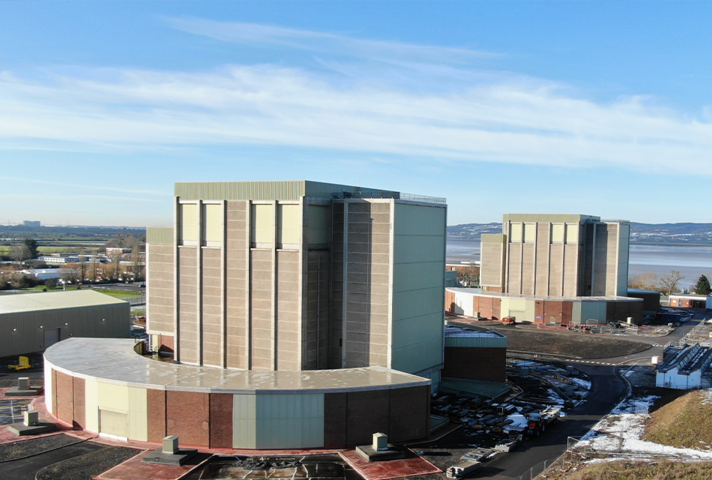 UK Magnox is preparing to begin a key decommissioning project to demolish four blower houses at the site of the closed Berkeley NPP.
UK Magnox is preparing to begin a key decommissioning project to demolish four blower houses at the site of the closed Berkeley NPP.
“This is one of the largest decommissioning projects that Berkeley site has seen for several years,” said Ross McAllister, Magnox programme delivery director. “It was originally planned for the 2070s so it is fantastic to bring that forward by five decades in our aim to deliver our mission better, faster and even safer.”
Berkeley NPP’s two Magnox reactors began operation in 1962 with a total capacity of 276 MWe. They were closed in 1988 and 1989 and in 1992, Berkeley became the first Magnox site to complete defueling and it was also the first to decommission its fuel storage ponds. It was the first UK NPP to be decommissioned. The turbine hall was demolished in 1995 and cooling ponds in 2001. In 2010, the units were the first to be sealed up and placed in 'safestor', a passive state in which they will be monitored and maintained until the site is completely cleared after some 65 years.
In January, the first radioactive waste from underground vaults at the site was transferred using a concrete box to an interim on-site storage facility. The site housed around 620 tonnes of metallic fuel element debris and 6,665 containers, including sludge cans, in three underground vaults. A silo houses charge rods and the chutes used to discharge fuel from the reactors.
“The blower houses circulated gas through the reactors to transfer heat into 310 tonne boilers to create steam to turn the turbines and generate electricity,” McAllister explained. “The last of the 15 gigantic metal boilers was transported to Sweden for cleaning, smelting and recycling in 2013. The buildings will be emptied of the residual metallic low-level waste and undergo a full asbestos clean before being demolished. The work is expected to take eight years to complete and will be another major step forwards in sustainably decommissioning Berkeley site with our supply chain partners.”
Following extensive procurement exercises, Altrad was awarded a £30.8m ($38.8m) contract for the design, asbestos removal, deplant, demolition and construction works in and around the blower houses. Altrad will be supported by other Celadon alliance companies including: Veolia KDC Decommissioning Services; NSG Environmental; OBR Construction; Mammoet; and Cavendish Nuclear.
Altrad General Manager for Magnox Kevin Williamson said the contract encompasses the retrieval and cleaning of the primary circuit ductwork and miscellaneous steelwork from the blower houses, prior to their demolition. This includes the processing of the spring hangers from the lubrication pits, which need to be de-energised and made safe before they can be cleaned.
Nuclear Waste Services (NWS), a Nuclear Decommissioning Authority operating company, was awarded a £13.7m contract to manage 2,400 tonnes of metallic waste. Carly Sutton, NWS Consultant & Magnox Relationship Manager said: “Through our metallic waste treatment service and working with our supply chain partner Augean we will establish a waste handling compound at Berkeley to provide a safe and secure undercover area where the metallic waste can be processed before it leaves the site for treatment. She added that the high-quality steel removed will be treated, recycled and returned to the metal market for reuse.
Chris Hannon, Augean Head of Radioactive Waste Services explained that the metallic waste will be treated at Augean sites in the UK with over 95% of the metal being decontaminated to levels that allow recycling. “We’re working with a number of key subcontractors including NSG Environmental who will be leading the design of the waste handling compound,” he said.
Image: Reactors and blower houses at the Berkeley site (courtesy of Magnox)






